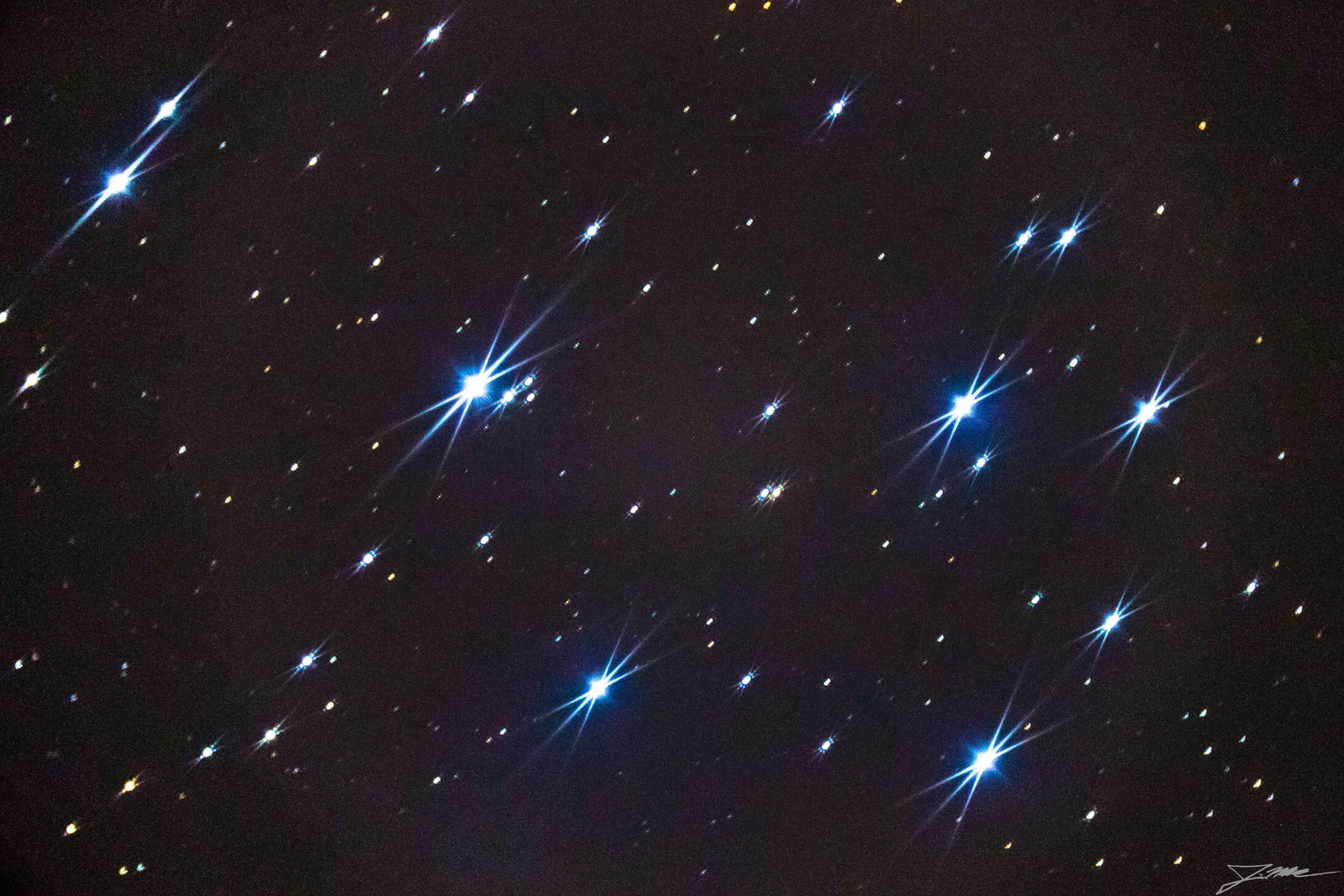
Given everything going on with us right now, I’m really thankful that Kelly understands when I go out and set up the tripod on clear nights. I’m not so much avoiding people, as I am recharging my inner nerd. Since we’re in such a light-polluted area, I typically just bypass trying to look at stuff visually through the scope, and jump straight to imaging. It has been quite a steep learning curve, as much of the field is pretty intolerant of user error. But I’m slowly getting better, and improving my equipment, knowledge of the stars, technique, and my patience.
The heavens move steadily around and around, and so a great portion of this hobby is planning sessions around when the objects I’m trying to shoot will be visible between all the trees in the neighborhood. While I could go somewhere else and get a better view from horizon to horizon, that would require packing all the equipment in the truck, and leaving the house for hours at a time. By planning imaging sessions around what is visible from the house, I can get the tripod set up, have dinner, wait on the sun to go down, set up and align the scope, and then kick off an imaging run. During portions of that process I can come back inside and help put Maddie to bed, or get ice cream after dinner with Kelly, or just be around for whatever. As I’ve collected a couple of pieces of kit, specifically the intervalometer and the dew heater, I can get aligned and focused, and then kick off an hour or better imaging run without having to tend to the scope, or worry that the last half of my shots will be useless because the lens fogged up.
In addition to the astrophotography kit, Kelly finally said it was okay for me to snag a new-to-me Canon 6D when a really good deal came up on Craigslist(anybody in the market for a good crop-frame dSLR and awesome 18-200mm lens?), so I’ve been able to take some better pictures of babygirl and the black dog. This camera is also a low-light monster, since the ISO runs a full three f-stops past the T1i, up to 108,400. The last two stops are denoted as H1 and H2 and are ‘expanded ISO’, so they’re really just for trying to capture deer on the roadside in the dark. As far as astro-work goes, when you’re averaging multiple images, the sub-frames at 12,800 are really usable. Shooting at the same ISO as I was before should mean I’ll have a far lower background noise level, thus boosting the Signal-to-Noise Ratio (SNR). Or, I can also shoot at a higher ISO with a similar noise floor as before, but since I’m one or two stops more exposed than before, I can shoot for 1/2 or 1/4 of the time, and get more sub-frames. at the same exposure.
What all this astro-jargon gets at is that I’ve had some reasonable success with imaging recently. I’ve picked up a couple of Vivitar primes for piggyback work (more on that in a later post), and in initial work with the new camera, these lenses seem to be quite capable. First I’ve got a shot comprised of a stack of 35 15-second exposures, shot on a Vemar-branded 300mm f/5.5, at f/8, ISO 12,800:
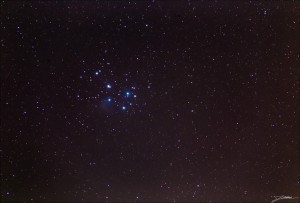
I tried it stopped down just to see how it rendered the 8-pointed stars, but the lens also shoots fine wide open. I have a 200mm f/3.5, the 300mm f/5.6, and a 400mm f/5.6 monster that when all is said and done, cost me less than $120 in total, including all the adapters for mounting them on the Canon EF mount. I’ve already determined that the 200mm, while great for terrestrial photography, has some nasty coma issues wide-open, so it’s definitely out of the running as a keeper. The plan is to evaluate all 3, and then pick the best and sell the other two. But that’s a story for another post. Back on the topic of the new camera, it has much better high-ISO capabilities making focus via live-view easy. Especially when I throw the Bahtinov mask on the front of the scope:
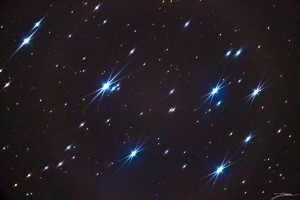
That’s a single 15-second frame at ISO 6400, shot just to show what the view looks like for focusing. With the ISO cranked all the way up to 102k, the live-view image is not too far from what’s pictured here. I should probably shoot a picture of the back of the camera with my cell phone or point-and-shoot just to show how crazy-easy this is to use. Of course, the idea to getting the scope focused is to kick off an imaging run, from which I managed to end up with this:
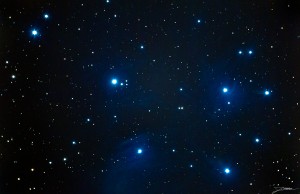
That’s 50x 15-sec shots at 1280mm, f/6.3, ISO 12,800. There’s more detail here than last February’s image, and I was able to get Atlas and Pleione (upper left) in the frame this time. While shooting at lower ISO would result in lower noise and a higher SNR, I’m still quite impressed with the performance of this camera at what is the highest ISO available on the T1i. 25,600 is reasonably usable for terrestrial “gotta stop the motion” shots, I don’t think I’ll end up using it for astro work.
As an example of the kinds of imaging which can be accomplished with this level of low-light performance, here’s the first stack I took with the 400mm f/5.6 lens – 100 one-second shots from a tripod, with NO tracking, stacked in DSS and post-processed in Light room and Photoshop:
Camera, lens, tripod, time. No telescope or tracking mechanism required. Me likey. Even at 35°. There’s just something wondrous and calming standing and looking up at the stars, the only real sound being the mirror and shutter mechanisms whirring and clicking away.j
Edited to add:
Here is the initial test shot I cobbled together with the 300mm lens wide-open at f/5.5 – ISO1600 with the T1i:
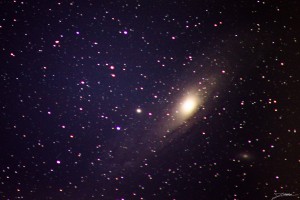
As you can see there’s a little drift in the stars, meaning I didn’t have my alignment dead-on. However, this lens does render color and capture detail better than the Canon 75-300mm f/4-5.6 III USM, so we’ll see how it does in back-to-back testing with the 400mm.
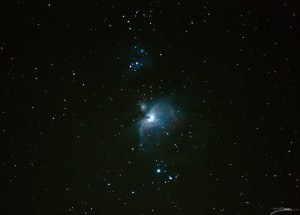

Leave a Reply